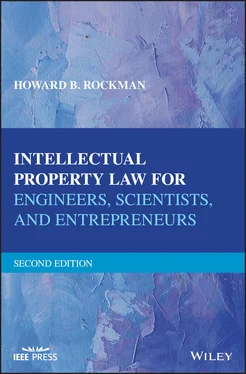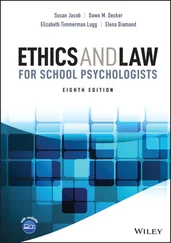“The design of the patent laws is to reward those who make some substantial discovery or invention, which adds to our knowledge or makes a step in the useful arts. Such inventors are worthy of all favor. It was never the object of those laws (patent laws) to grant a monopoly for every trifling device, every shadow of a shade of an idea, which would naturally and spontaneously occur to any skilled mechanic or operator in the ordinary progress of manufactures. Such an indiscriminate creation of exclusive privileges tends rather to obstruct than to stimulate invention. It creates a class of speculative schemers who make it their business to watch the advancing wave of improvement, and gather its foam in the form of patented monopolies, which enable them to lay a heavy tax upon the industry of the country, without contributing anything to the real advancement of the arts.”
As you can see, the justices of the Supreme Court sometimes wax poetic when describing their ideas of what should be patentable and what should be not.
6.3.3 Goodyear Rubber and Tire Company v. Ray‐O‐Vac Company, Supreme Court, 1944
The patent in suit here was for a very narrow advance in a crowded art, and covered a leak‐proof dry cell battery, where insulating material was placed around the conventional cylindrical zinc cup of a flashlight battery, and this was covered by an outside protective metal sheath that would enclose the insulated sidewalls of the zinc cup and tightly embrace both the upper and lower closures to prevent leakage of the electrolyte and depolarizing mix constituting the internal portions of the battery.
The Supreme Court held that, viewed after the event with hindsight, the invention covered by this patent may seem simple. However, the Court noted that, during the prior period of 50 years in which flashlight batteries were used, no one devised a method of curing the defect of leakage. Once the method of the patent in suit was used, it became publicly and commercially successful. The Court held that the fact of commercial success was entitled to weight in determining whether the improvement amounted to an “invention” and should, in a close case, tip the scales in favor of patentability. In this case, the leak proof battery patent was upheld as not “obvious.”
6.3.4 Cuno Engineering Corporation v. Automatic Devices Corporation, Supreme Court, 1941
This case involved a patent on the cigarette lighter commonly found in automobiles. The prior art against which the obviousness of this cigarette lighter was tested comprised two patents, one covering a wireless or cordless cigarette lighter for a car, and another covering an electric lighter for cigars and cigarettes with a thermostatic control. The device of the patent in question added to the so‐called wireless or cordless lighter a thermostatic control responsive to the temperature of the heating coil, which automatically returned the plug to its off position after the heating coil had reached a predetermined maximum temperature. The plug was then manually removed from the dashboard of the car to light the smoking material. When replaced in the socket after use, the cigarette lighter was held in an open circuit position until next needed.
The Court held that the thermostatic controls of a heating unit operating to cut off an electric current energizing the unit when its temperature had reached its desired point were well known when the patentee made his invention. The Court held that the advance of the inventor over the thermostatically controlled electric lighter was the use of the removable plug bearing the heating unit, which plug was shown in the other prior art patent to establish the automatic control circuit. The Court said the question was whether it was invention (or non‐obvious) to apply the automatic circuit of one patent to the removable heating unit in substitution for a circuit manually controlled as shown by another patent. The Court in this case held that, if an “improvement” is to obtain the privileged position of a patent, more ingenuity must be involved than the work of a mechanic skilled in the art.
The Court recognized that the principles set forth in the Hotchkiss v. Greenwood case applied to the adaptation or combination of old or well‐known devices for new uses. However, the Court went on to say that “the new device, however useful it may be, must reveal the flash of creative genius, not merely the skill of the calling.” In this case, the court went on to say that the patent in question did not reach this level of inventive flash of genius. The so‐called inventor merely incorporated the well‐known thermostat into the old wireless lighter to produce a more efficient, useful, and convenient article. A new application of an old device may not be patented if the result claimed as new is the same in character as the original result. The use of a thermostat to break a circuit in a “wireless” cigar lighter is analogous to, or the same in character as, the use of such a device in electric heaters, toasters, or irons, whatever may be the difference in detail of design. Ingenuity was required to effect the adaptation, but no more than that to be expected of a mechanic skilled in the art. Then, the Court went on to say, rather poetically: “Strict application of that test is necessary lest in the constant demand for new appliances the heavy hand of tribute be laid on each slight technical logical advance in an art.”
6.3.5 The Great Atlantic and Pacific Tea Company v. Supermarket Equipment Corporation, Supreme Court, 1950
The claims of the patent before the Supreme Court in this case asserted the invention of a cashiers’ counter (such as the check‐out counter in a grocery store) equipped with a three‐sided, horizontally disposed, U‐shaped frame or rack, with no top or bottom. When pushed or pulled along the top of the checkout counter, the frame moved the groceries deposited within it by a customer to the checking clerk, and left them there when pushed back to repeat the operation. I recall these devices being used in grocery stores when I was young—they have now been replaced by moving conveyor belts.
The Supreme Court noted that this device had been widely adopted and successfully used, but did it only bring old elements together? The Court held that the mere aggregation of a number of old parts or elements, which in the aggregation perform or produce no new or different function or operation than they performed individually before, is not patentable invention. The Court noted that there was no finding that the old elements that made up this device performed any additional or different function in the combination than they performed out of it. The Court stated that the three‐sided rack would draw or push goods put within it from one place to another—just what any such rack would do on any smooth surface—and the guide rails keep it from falling. The Court held that a patent for a combination that only unites old elements with no new change in their respective functions, such as presented here, obviously withdraws what technology is already known to others into the field of its monopoly and diminishes the resources available to skillful men. The Court held that the patentee had added nothing to the total stock of knowledge, but had merely brought together segments of prior art in an attempt to claim them in congregation as a monopoly.
The Court continued by saying that the framers of the Constitution plainly did not want to grant exclusive rights freely. To justify a patent, the invention had to serve the ends of science—to push back the frontiers of chemistry, physics, and the like; to make a distinctive contribution to scientific knowledge. The court went on to reaffirm the “inventive genius” test for patentability as set forth in the previously mentioned Cuno Engineering case. The Supreme Court in the present case stated:
Читать дальше












